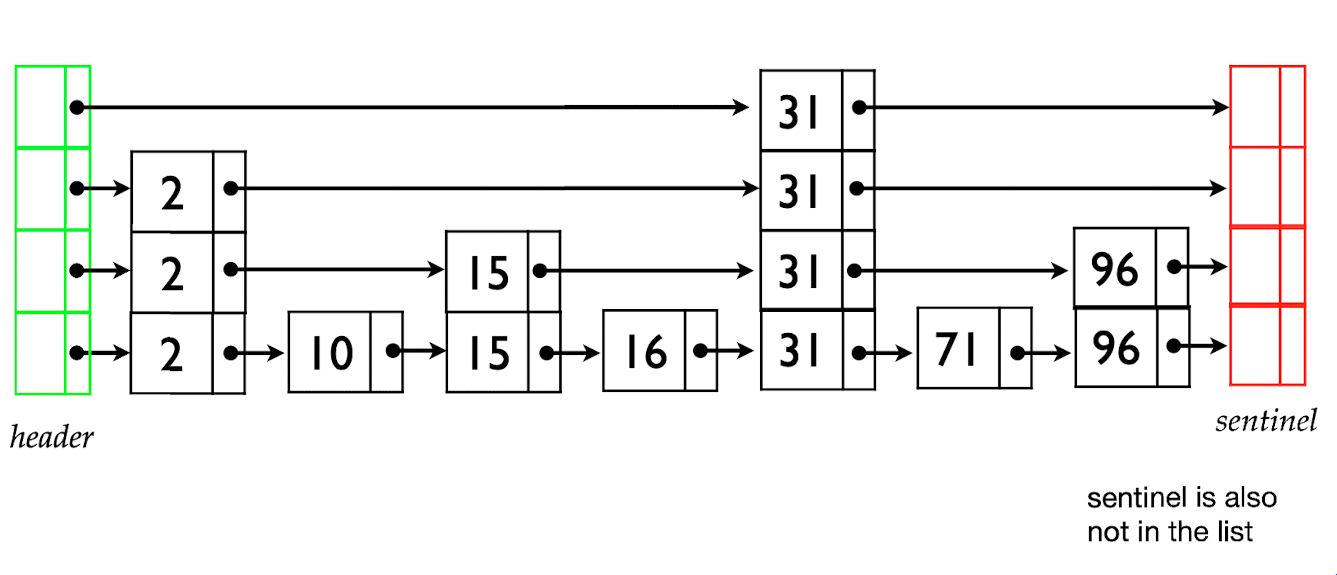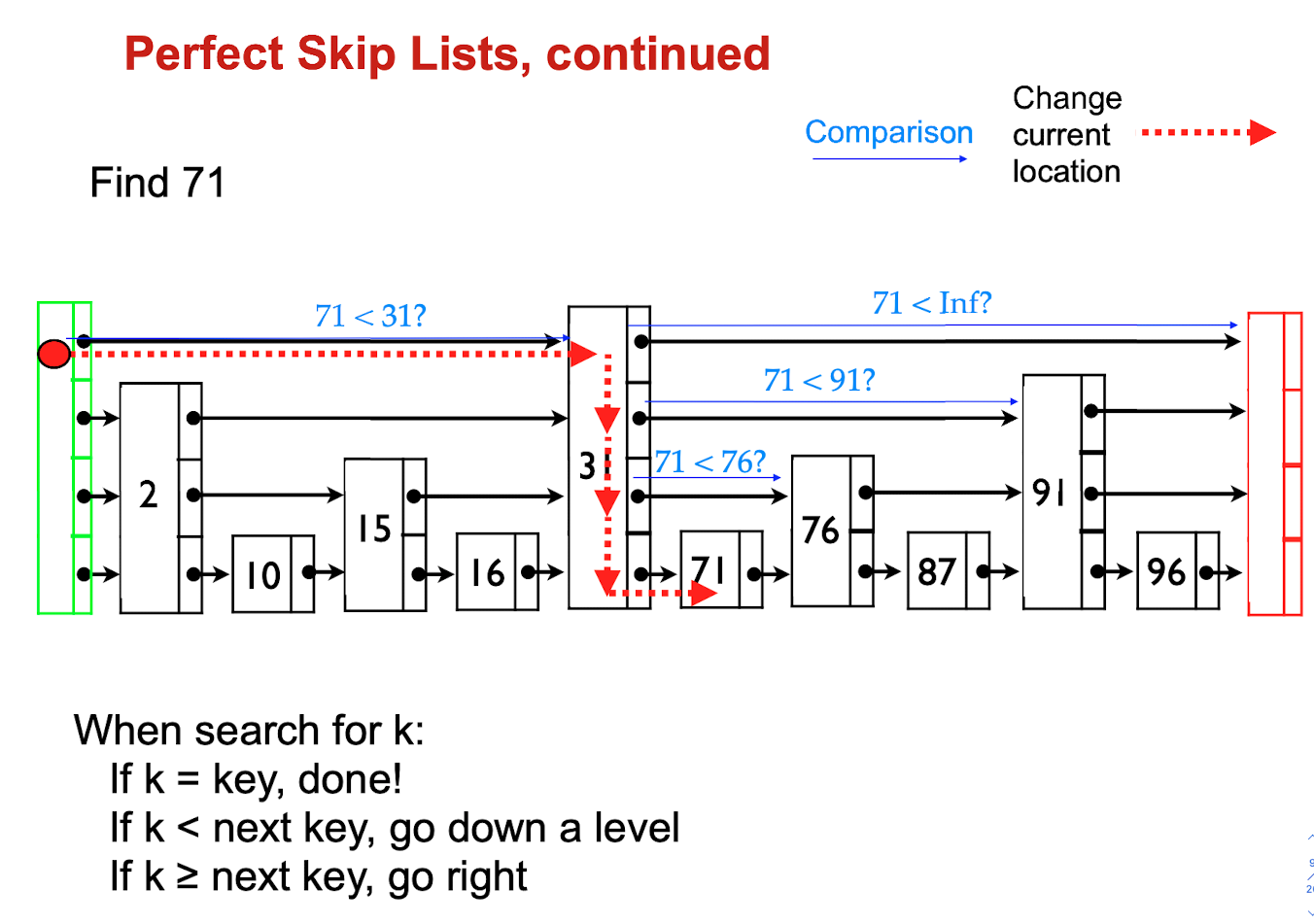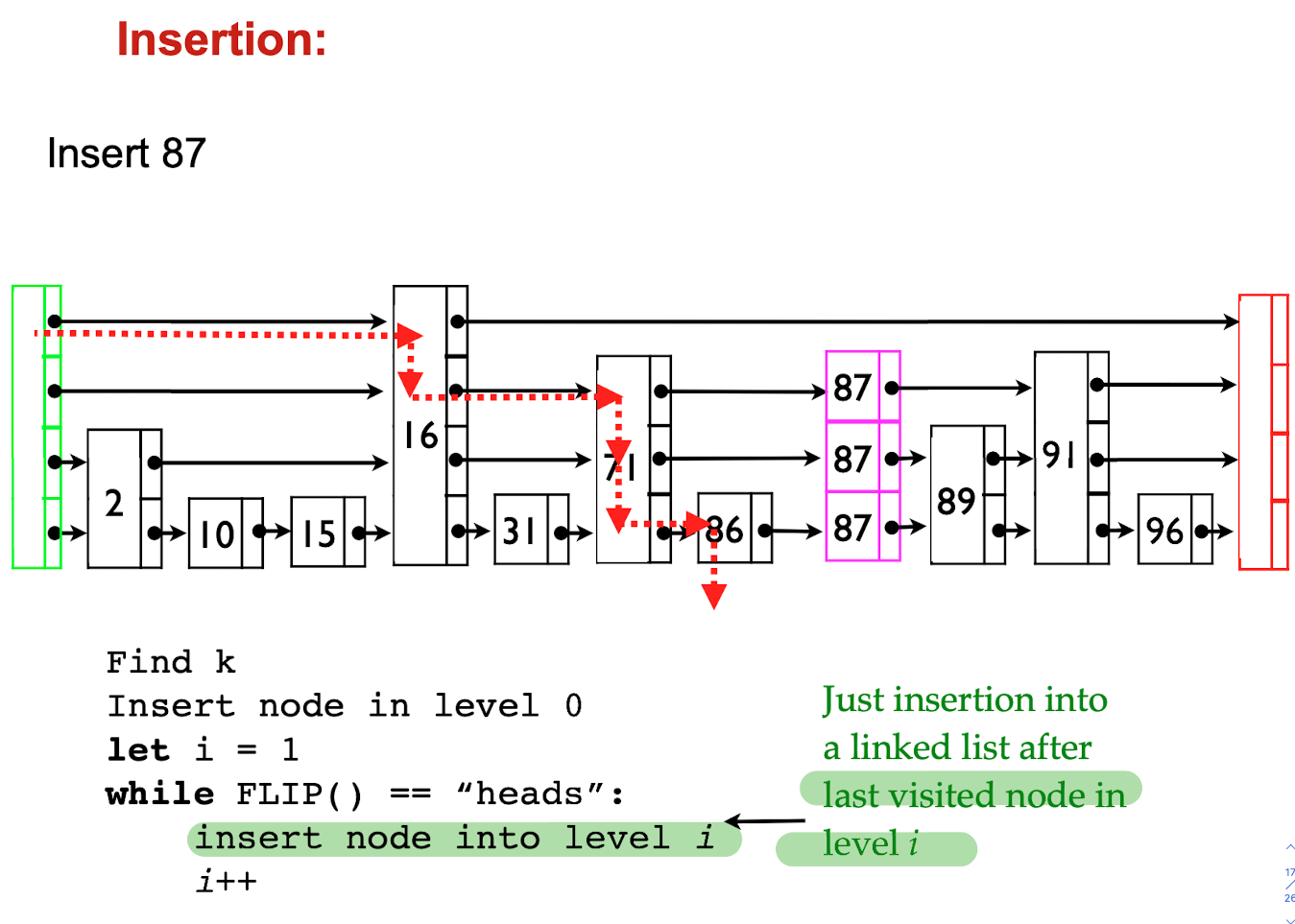Background
- Generalization of sorted linked lists
- Expected search time is O(logn)
- Randomized data structure
- Use random coin flips to build the data structure
Perfect skip list

- Keys are stored in sorted order
- O(log n )
levels - Each higher level contains 1/2 the elements of the level below it
- Header & sentinel nodes are in every level
- Nodes are of variable size
range from 1 to O(log n )pointers - Pointers point to the start of each node
- Called skip list because higher level lists let you skip over many items
Find

- To find an item, we scan along the shortest list until we would “pass” the desired item
- At that point, we drop down to a slightly more complete list at one level lower
Search time
- O(log n) levels because you cut the number of items in half at each level
- Will visit at most 2 nodes per level: If you visit more, then you could have done it on one level higher up
- Search time is O(log N)
Insert & Delete
- Insert & delete might need to rearrange the entire list
- Perfect Binary Search Trees, Perfect Skip Lists are too structured to support efficient updates
Resources
https://www.youtube.com/watch?v=Q9MdwzewSZg
Idea:
- Relax the requirement that each level has exactly half the items of the previous level
- Instead: design structure so that we expect 1/2 the items to be carried up to the next level
- Skip lists are a
randomized data structure: the same sequence of inserts/deletes may produce different structures depending on the outcome of random coin flips
Randomization
- Allows for some imbalance
- Expected behavior (over the random choices) remains the same as with perfect skip lists
Idea: Each node is promoted to the next higher level with probability 1/2
- Expect 1/2 the nodes at level 1
- Expect 1/4 the nodes at level 2
Therefore, expect number of nodes at each levels the same as with perfect skip lists
Also: expect the promoted nodes will be well distributed across the list

Noted here: the “heads” mean the coin’s head
No “bad” sequences
- We expect a randomized skip list to perform about as well as a perfect skip list.
- Some bad conditions might occur, but not often
- The skip list will just be a linked list
- The skip list will have every node at every level
- These degenerate skip lists are very unlikely
- Level structure of a skip list is independent of the keys you insert
- Therefore, there are no “bad” key sequences that will lead to degenerate skip lists
Skip list analysis
Expected number of levels = O(log n)
- Expected nodes at level 1 would be n/2
- Expected nodes at level 2 would be n/4
- Expected nodes at level n would be 1
Backward analysis
Consider the reverse of the path you took to find k
Note that you always move up if you can (because you always enter a node from its topmost level when doing a find)
Probability
The probability that you can move up at a given step of the reverse talk would be 0.5
C(j) would be the expected number of steps to return to the start if we start at level j
Steps to go up j levels =
Make one step, then make either
- C(j-1) steps if this step went up because node was extended past level j [Prob = 0.5]
- C(j) steps if this step went left because node wasn't extended up past j [Prob = 0.5]Expected number of steps to walk up j levels is:
C(j) = 1 + 0.5C(j-1) + 0.5C(j)
=> C(j) = 2 + C(j-1)
Therefore, the expected number of steps at each level would be 2
- Expanding C(j) above would give us C(j) = 2j
- Since O(log n ) levels, we have O (log n) steps, which would follow the expectation
Implementation nodes
- Node structure are of variable size
- Once a node is created, it size won’t change
- It’s often convenient to assume that you know the maximum number of levels in advance, but it is not a requirement
- Post title:skip list algo notes
- Post author:Yuxuan Wu
- Create time:2021-10-29 17:14:23
- Post link:yuxuanwu17.github.io2021/10/29/2021-10-26-skip-list-algo-notes/
- Copyright Notice:All articles in this blog are licensed under BY-NC-SA unless stating additionally.